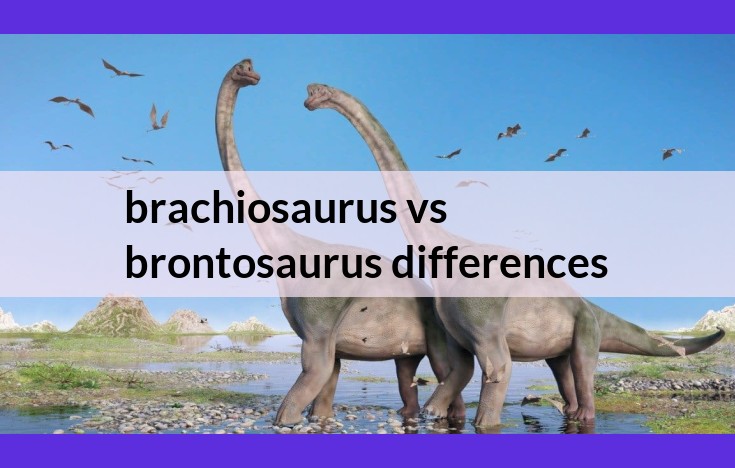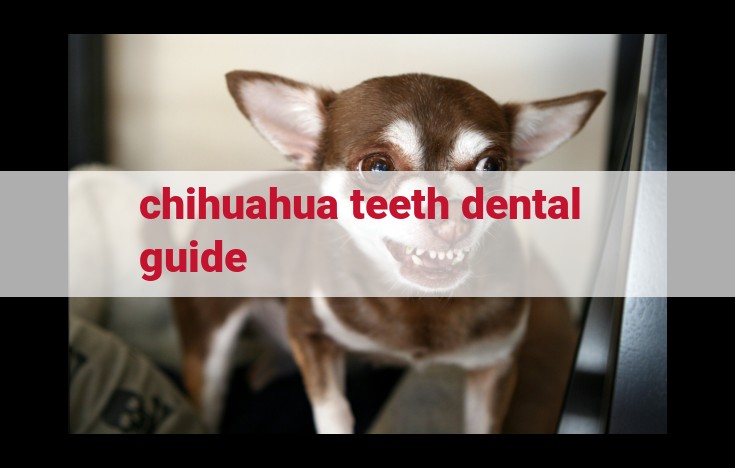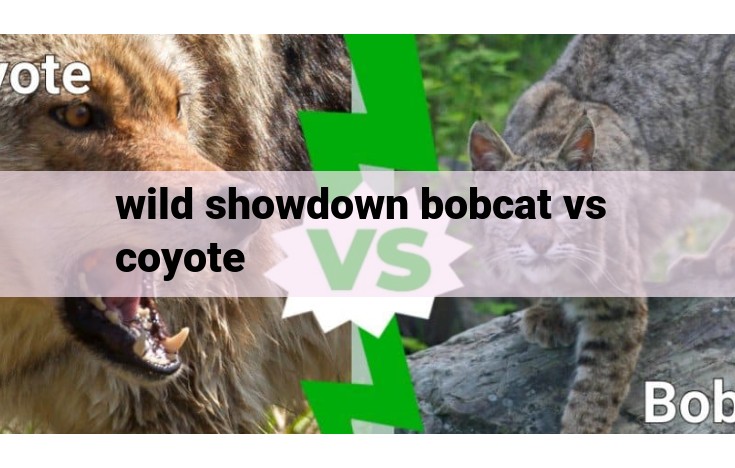Brachiosaurus and Brontosaurus were colossal sauropods, but notable differences set them apart. Brachiosaurus boasted a longer neck, reaching up to 9 meters, while Brontosaurus’s neck was shorter, around 6 meters. Brachiosaurus’s skull was narrower with a tooth arrangement for browsing foliage, while Brontosaurus’s was wider for grasping plants closer to the ground. Despite similar weights, Brachiosaurus stood taller due to its longer forelimbs. Their diets overlapped, but Brachiosaurus likely fed on higher vegetation, while Brontosaurus grazed closer to the ground. These distinctions reflect their adaptations to their respective environments.
Size Matters: Comparing the Titans
When it comes to prehistoric behemoths, two colossal sauropods reign supreme: Brachiosaurus and Brontosaurus. These gentle giants were herbivores that roamed the Earth during the Jurassic period, leaving an enduring legacy in the fossil record. Their sheer size and unique physical characteristics make them a fascinating subject of scientific inquiry and awe-inspiring wonder.
Length and Weight: A Tale of Titans
Brachiosaurus and Brontosaurus were both incredibly massive creatures, but they differed significantly in their overall dimensions. Brachiosaurus, the taller of the two, stood at an astonishing 85 feet long and weighed up to 80 tons, equivalent to the combined weight of ten African elephants. Brontosaurus, on the other hand, was shorter but still remarkably long, measuring 74 feet in length and weighing around 26 tons. These titans were true behemoths, dwarfing even the largest modern-day land animals.
Relative Proportions: A Study in Contrasts
While both Brachiosaurus and Brontosaurus were sauropods, their body proportions were strikingly different. Brachiosaurus possessed an unusually long neck that accounted for nearly half of its total length. This elongated neck allowed it to reach high into the canopy of trees to browse on leaves and other vegetation. Brontosaurus, in contrast, had a shorter neck and a more robust body. Its massive limbs and broad feet provided stability and supported its enormous weight. These variations in body proportions reflect the different ecological niches these dinosaurs occupied.
Neck of the Game: Ascending to Great Heights
In the realm of prehistoric giants, the necks of Brachiosaurus and Brontosaurus stood as towering marvels that propelled them to the zenith of the plant-eating world. These magnificent herbivores possessed necks that dwarfed even the tallest trees, allowing them to reach the most succulent foliage high above the ground.
Brachiosaurus boasted the longest neck of any dinosaur, with a staggering 12-15 vertebrae. Each vertebra was robust and pneumatized, meaning it was hollow, reducing weight and providing additional support. This unprecedented neck enabled Brachiosaurus to browse on leaves and twigs that were out of reach of other herbivores, giving it a significant advantage in the competition for food.
Brontosaurus, on the other hand, had a shorter but thicker neck with around 11 vertebrae. Its neck was more muscular than that of Brachiosaurus, allowing it to support its massive head and exert tremendous force when feeding. Brontosaurus‘s neck also featured pneumatic vertebrae, but to a lesser extent than Brachiosaurus.
The necks of Brachiosaurus and Brontosaurus not only enabled them to reach high-up vegetation but also played a vital role in thermoregulation. By exposing their extensive neck surface area to the air, these dinosaurs could efficiently dissipate excess body heat, keeping them cool in the warm prehistoric climate.
In conclusion, the necks of Brachiosaurus and Brontosaurus were evolutionary marvels that epitomized their dominance as the tallest land animals of all time. Their extraordinary length, unique adaptations, and profound impact on their environment continue to captivate and inspire awe in scientists and dinosaur enthusiasts alike.
Cranial Differences: Shape and Structure
The Face of a Giant
The skulls of Brachiosaurus and Brontosaurus were as awe-inspiring as their bodies. Brachiosaurus sported a long, slender skull, while Brontosaurus possessed a wider, more robust one. These differences hinted at their unique feeding habits.
Jaw Arrangements
Brachiosaurus‘s skull featured a narrow, U-shaped jaw, ideal for nibbling on leaves high in the canopy. Its straight, slender teeth resembled pegs, perfectly suited for stripping leaves from branches.
In contrast, Brontosaurus had a broad, spoon-shaped jaw designed for scooping up vegetation from the ground. Its wide, rounded teeth were designed to crush and grind fibrous plants.
Implications for Feeding Habits
These cranial variations suggest that Brachiosaurus was a selective browser, reaching for leaves and twigs in the treetops. Brontosaurus, on the other hand, was a generalist feeder, consuming a wide range of ground-level vegetation.
Their distinctive skulls allowed these giants to exploit different food sources, minimizing competition and ensuring their survival in the diverse ecosystems of the Late Jurassic period.
Teeth Tell Tales: Nibbling on Nature’s Bounty
In the realm of colossal herbivores, Brachiosaurus and Brontosaurus stand as towering titans. As they ambled through prehistoric landscapes, their formidable appetites required specialized dental tools to navigate the diverse plant life.
Brachiosaurus, with its giraffe-like neck, possessed pencil-shaped teeth resembling thin chisels. These teeth were ideally suited for stripping leaves from tall trees, allowing it to reach high-up foliage inaccessible to other herbivores. The narrow design of its teeth ensured precision in leaf removal, maximizing its nutritional intake.
In contrast, Brontosaurus boasted spoon-shaped teeth reminiscent of gardening trowels. Its teeth were broader and flatter, designed to scoop up vegetation from the ground. This specialized dental morphology suggests that Brontosaurus was a dedicated ground feeder, consuming low-lying plants and shrubs.
The variations in their teeth reflect distinct ecological niches. Brachiosaurus, with its specialized leaf-stripping teeth, could exploit the canopy’s abundant foliage, leaving the understory vegetation to its neighboring herbivore. This partitioning of resources allowed these two giants to coexist harmoniously in their shared environment.
Thus, the teeth of Brachiosaurus and Brontosaurus provide a fascinating glimpse into their feeding behaviors and ecological roles. By unraveling the secrets of their dental adaptations, we gain a deeper appreciation for the diversity and specialization that characterized the prehistoric world.
Limbs of Distinction: Striding for Height and Stability
When it comes to dinosaurs, size isn’t the only captivating aspect. Their unique anatomical features also contribute to their intrigue, and the limbs of Brachiosaurus and Brontosaurus are no exception. These towering herbivores possessed distinct limb characteristics that played crucial roles in their movement and overall appearance.
Long Forelimbs of Brachiosaurus: Reaching for the Heavens
Brachiosaurus stood as one of the tallest dinosaurs, reaching heights of up to 85 feet. Its most striking feature was its exceptionally long forelimbs, which were significantly longer than its hind limbs. These elongated limbs allowed Brachiosaurus to elevate its head to impressive heights, reaching up to 40 feet off the ground. This adaptation provided access to high-up foliage, ensuring a steady supply of food.
Robust Limbs of Brontosaurus: Stability at Scale
In contrast to Brachiosaurus’s long and slender forelimbs, Brontosaurus boasted thick and robust limbs. These strong legs supported its massive weight, which could reach up to 25 tons. The robust limbs provided stability and allowed Brontosaurus to navigate diverse terrains, including uneven ground and dense vegetation.
Influence on Movement and Appearance
The contrasting limb characteristics of these two dinosaurs profoundly influenced their movement and overall appearance. Brachiosaurus moved with a somewhat awkward gait, its long forelimbs requiring a hunched posture. Brontosaurus, on the other hand, likely moved with a more steady and purposeful stride, its robust limbs providing stability.
These limb differences also contributed to the distinct silhouettes of these dinosaurs. Brachiosaurus appeared tall and slender, with its long neck and elevated head, while Brontosaurus had a more stocky, robust appearance.
The limbs of Brachiosaurus and Brontosaurus stand as fascinating examples of evolutionary adaptation. Their specialized features allowed these massive herbivores to thrive in their respective habitats, providing us with valuable insights into the diversity and ingenuity of the dinosaur era.
Weighing the Giants: Tons of Muscle and Bone
When we ponder the massive proportions of Brachiosaurus and Brontosaurus, the question of their weight naturally arises. These colossal herbivores dwarfed all other land animals that roamed the Earth during their time.
Estimating the weight of dinosaurs can be a tricky task, as their complete skeletons are rarely found intact. However, paleontologists have developed various methods to approximate their heft based on the size and proportions of their fossilized remains.
Brachiosaurus, with its towering height and elongated neck, is estimated to have weighed around 30 tons. Its massive forelimbs and robust body frame supported this colossal weight. The sheer size of its bones and the thickness of its vertebrae indicate the tremendous strength required to sustain its immense stature.
Brontosaurus, known for its extraordinary length, is believed to have tipped the scales at a staggering 40 tons. Its weight was primarily distributed along its elongated body, with its sturdy limbs providing stability. The weight of Brontosaurus allowed it to navigate diverse terrains and support its long neck and heavy tail.
The immense size of these dinosaurs was not simply a matter of bulk. Their colossal frames were perfectly adapted to their herbivorous lifestyle. Their weight allowed them to exert tremendous force when grazing on tough vegetation, while their long necks enabled them to reach high-up foliage.
The distribution of their weight also had a significant impact on their locomotion. Brachiosaurus, with its weight concentrated in its upper body, exhibited a distinctive “upright” stance. Brontosaurus, on the other hand, with its more evenly distributed weight, had a more horizontal posture.
The weight of Brachiosaurus and Brontosaurus not only defined their physical appearance but also influenced their behavior and ecological roles. Their sheer size intimidated predators and allowed them to dominate their environments. They roamed the land as gentle giants, feeding on an abundance of plant life and contributing to the intricate tapestry of prehistoric ecosystems.
Dietary Delights: Catering to Herbivorous Needs
- Discuss the similarities and differences in the diets of Brachiosaurus and Brontosaurus, emphasizing their preference for plant material and exploring any dietary specializations they may have had.
Dietary Delights: Catering to Herbivorous Needs
As gentle giants of the Mesozoic era, Brachiosaurus and Brontosaurus shared a common affinity for plant-based sustenance. Their massive frames and towering heights demanded a constant supply of vegetation, and their specialized adaptations allowed them to navigate the diverse plant life of their time.
Brachiosaurus, with its long, slender neck and treetop-browsing habits, primarily subsisted on leaves and high-up vegetation. Its teeth were adapted for stripping leaves from branches, and its peg-like molars efficiently ground down plant material. This specialized diet gave Brachiosaurus a competitive edge in exploiting the upper canopy layer of forests.
In contrast, Brontosaurus possessed a shorter neck and a broader skull, suggesting a more generalized feeding strategy. Its larger teeth were suited for grinding tougher plant material, indicating a diet that included a wider range of vegetation, including ferns, cycads, and even fallen fruits. This versatility allowed Brontosaurus to adapt to varying food sources as needed, making it a resilient herbivore in a changing environment.
Both Brachiosaurus and Brontosaurus were likely bulk feeders, consuming large quantities of plant material to meet their enormous energy demands. Their highly efficient digestive systems allowed them to extract maximum nutrients from their food, aiding in maintaining their colossal size.
While their diets had similarities, the subtle differences in their teeth and neck adaptations suggest that they occupied slightly different niches within the herbivore community. Brachiosaurus, with its specialized browsing capabilities, likely avoided direct competition with Brontosaurus, which was better equipped for ground-level foraging. This dietary specialization allowed these two massive sauropods to coexist harmoniously in the prehistoric ecosystems they inhabited.




